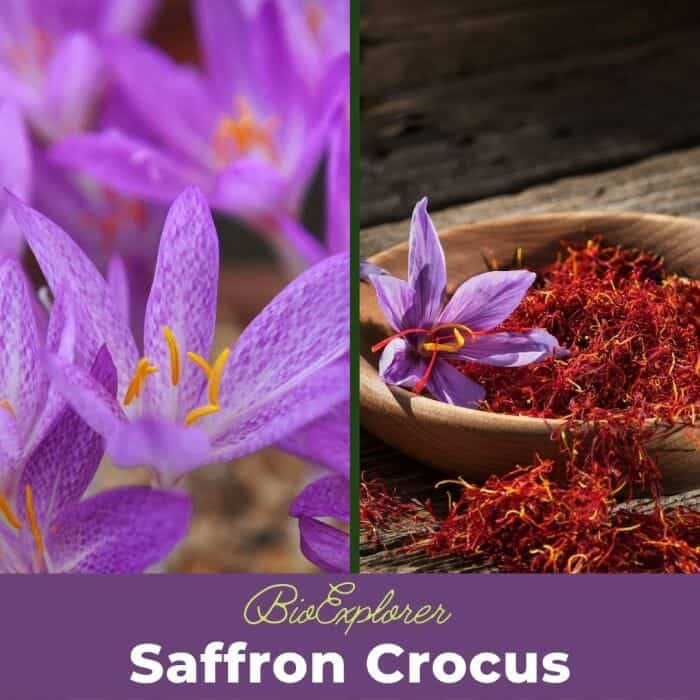
Saffron is a spice extracted from the flower of Crocus sativus, also known as “saffron crocus“. Strong purple styles and stigma known as threads are collected and dried for use primarily as a coloring agent and seasoning in food.
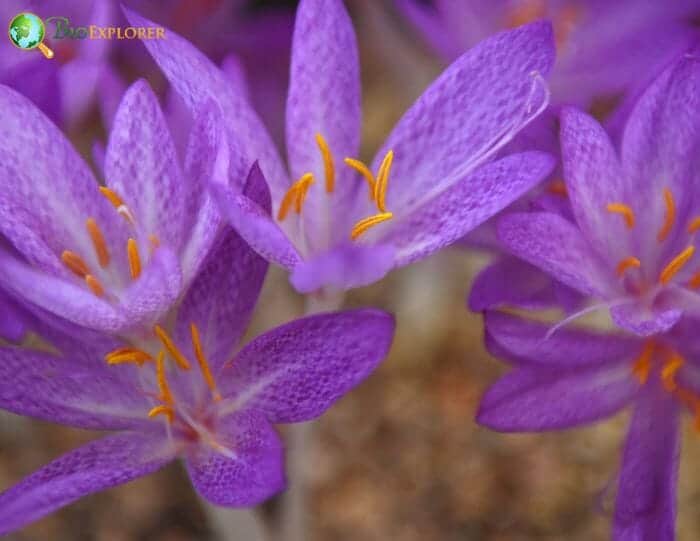
For long, Saffron has been the most expensive spice globally by weight. Although there are still doubts about its origin, Saffron is said to come from Iran. However, Mesopotamia and Greece have also been suggested as likely regions of origin for this plant.
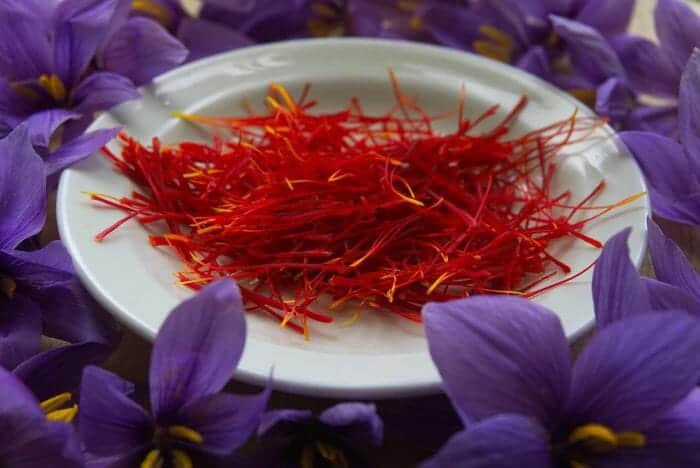
Saffron flowers belong to the Iridaceae (Iris) family and include about 80 species[1] found around the world.
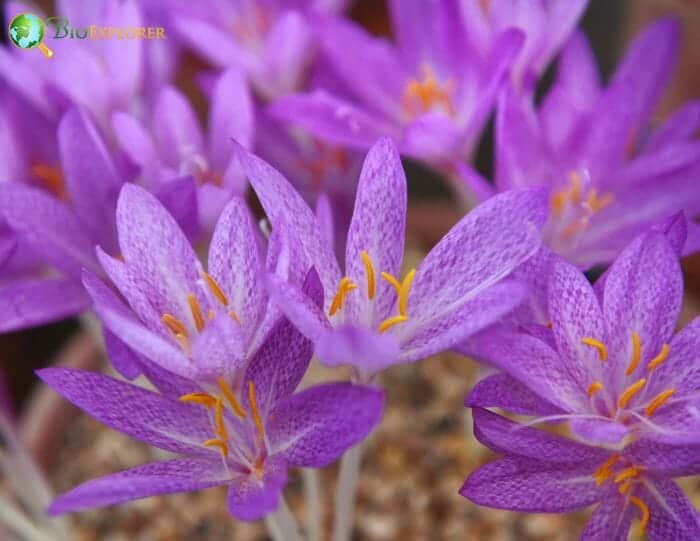
Saffron is a plant of small height, from 10 to 25 cm, developed from bulbs. A corm is a tuberous and bulbous structure, 2.5 to 3 cm. in diameter, with coated fibers of whitish and earthy color.
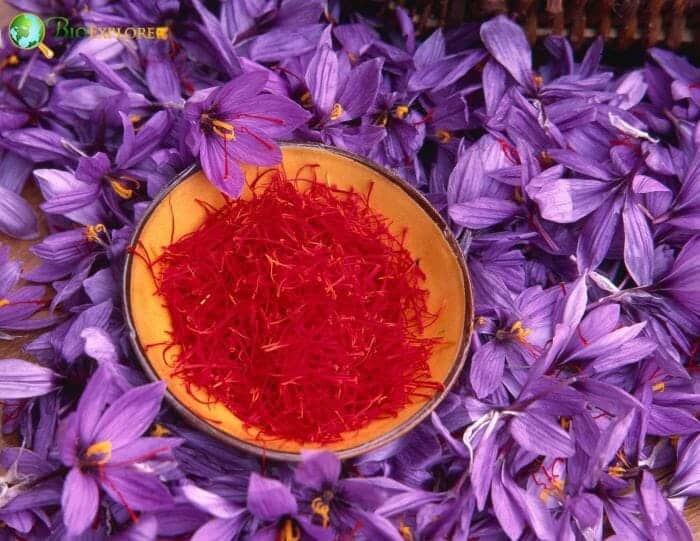
The saffron flower is single and terminal, purple, and comprises 6 petals, 3 stamens, and a style that ends with 3 orange-red stigmas. Unlike other blossoms of the same genus, saffron blossoms do not close overnight.
Saffron flowers typically appear in September/October and are only open for 2 to 3 days. After flowering, the plant’s leaves appear in late winter or autumn and persist until spring. Its leaves are marked by a white longitudinal line in the middle.











